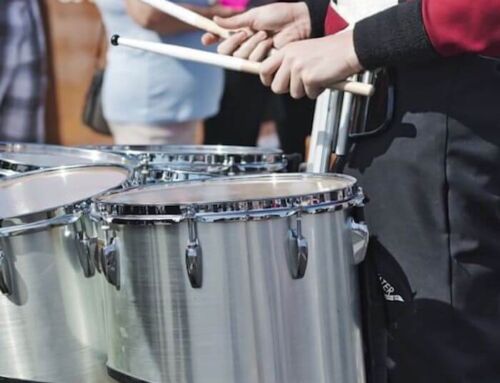Case numbers:
-
As of today in Massachusetts: 431 new confirmed cases, for a total of 115,741. 13 new deaths, for a total of 8,670.
-
Also as of today in Boston: 66 new cases, for a total of 15,084. No new deaths were reported yesterday, and the total remains at 746.
Status of COVID-19 in Boston:
-
The Mayor provided an update on the overall trends we’re seeing in Boston.
-
For the week ending August 15, the 7-day average positive test rate was 2.8%. That number continues to move up and down within the 2% to 2.9% range. This does not represent the percentage of the population infected; it represents the percentage of COVID-19 tests that come back positive.
-
For daily new cases, Boston remains in the state’s “yellow” category, with a little over six new daily cases reported per 100,000 people.
-
The number of people at emergency rooms with COVID symptoms and the COVID patients in ICUs both remain flat and below levels of concern.
-
The Mayor reiterated how important it is for everyone in the Boston community to remain vigilant and continue to wash their hands frequently, avoid large gatherings, practice social distancing, and wear a mask.
-
The Mayor said that the City of Boston will continue to be proactive in its efforts to contain the virus with testing, outreach, resources, and information in all needed languages and formats.
Update on testing:
-
More than 1,600 tests are being conducted per day, on average, in the City of Boston. Last week, nearly every neighborhood saw an increase in testing.
-
Citywide, there are more than 20 testing sites, including mobile sites that are moving to the areas with the greatest need.
-
At many sites, testing is available at no cost to individuals. The City encourages people to call ahead and confirm.
-
The City’s Mobile Testing Team moved to Jubilee Christian Church in Mattapan yesterday. It will run today and tomorrow, and next week from Tuesday through Saturday. It’s free and open to anyone, regardless of symptoms.
-
You can find a full list and map of all the testing sites at boston.gov/coronavirus.
Upcoming elections and deadlines:
-
The Mayor reminded everyone that the deadline to register to vote for the September 1 state primary election is tomorrow, Saturday August 22.
-
There are several ways to vote this year, including early voting, mail-in voting, a ballot drop box at City Hall, and in-person voting on election day.
-
For more information, including a full list of important dates, and to check your voter status, go to Boston.gov/Elections or call 311.
New Boston Resiliency Fund grants:
-
To date, our Boston Resiliency Fund has provided more than $25 million in grants to nonprofits and community organizations that are supporting vulnerable residents, with $1.2 million distributed in the last three weeks.
-
These organizations have pivoted during COVID to be a lifeline for the families and seniors they serve.
-
The Mayor highlighted a few recent grantees at today’s press conference:
-
Fresh Food Generation and the Food Project are working in East Boston to provide families with fresh vegetables, fruit, and dry goods, and prepared meals.
-
The Talented and Gifted Association Latino Program works with BPS students and families. They’re buying gift cards for 75 low-income families that can be used to support local businesses.
-
Greater Love Community Cares is a group that supports residents who are unemployed or under-employed with rent and other needs. They are hiring drivers to deliver medicine and essentials to seniors and medically vulnerable residents in Dorchester, Hyde Park, Jamaica Plain, Mattapan, Mission Hill, and Roslindale.
-
The members of the South Boston Association of Nonprofits are bringing fresh food, grocery store gift cards, and meals to low-income families and seniors.
-
The Mayor thanked all of these organizations for their partnership, and encouraged people to visit Boston.gov/BostonResiliencyFund to learn more, donate, or request funding.
-
Announcement of Fall plans for the Boston Public Schools:
-
The Mayor announced that the Boston Public Schools will move forward with a responsible, phased-in hybrid model to start the school year.
-
This approach will give the City of Boston and BPS time to assess health data before each step with the Boston Public Health Commission. It will allow the City of Boston and BPS to address learning needs and opportunity gaps in person and by providing extra help for students learning online. In every step, families have the choice of whether to opt-in to hybrid learning or stay fully remote.
-
On September 21, all students will begin with remote learning. Then, BPS will gradually introduce optional hybrid learning for all students, starting with the highest need students and the youngest students. BPS will then introduce optional hybrid learning for additional grade levels, starting with the youngest students, and moving up into the higher grades.
-
The Mayor announced the earliest dates by which students in each grade level will be able to start hybrid learning. Each new phase will be contingent upon the most up-to-date public health metrics.
-
No sooner than October 1, the option of hybrid learning may begin for students with the highest needs.
-
On October 15, optional hybrid learning may begin for the youngest students, in all three grades of kindergarten: K0, K1, and K2.
-
On October 22, opt-in hybrid learning may begin for grades 1-3.
-
On November 5, opt-in hybrid learning may begin for grades 4-8. That will include grades 6-8 in the high schools that include them.
-
On November 16, opt-in hybrid learning may begin for grades 9-12.
-
Each student’s exact first day in school for hybrid learning will depend on which group they are placed in, the A or the B group, for their 2 days per week in school.
-
-
To see the full plan with complete details about this plan, go to bostonpublicschools.org/Reopening.
-
The Mayor provided some additional information about how the phased approach will work, and how the City of Boston and BPS are working together to prepare for the weeks and months ahead:
-
The Mayor said that this is a flexible model, and that schools will have unique circumstances that require somewhat different approaches to each phase.
-
School facilities will be in full compliance with state public health guidelines from the first day anyone enters those buildings, staff or students, and that work is happening now. It will be complete and ongoing, as teachers and school leaders help identify additional steps.
-
-
Teachers will begin professional development on Tuesday, September 8 for teaching both the remote and hybrid models.
-
The first students will not return until at least October 1. As more students phase in, it will still be less than half of the normal numbers at any given time, in many cases far below the numbers recommended to maintain appropriate special distancing.
-
The Mayor expressed his gratitude to all parties who continue to contribute to this planning process, including the Superintendent, school leaders, and teachers, support staff, families, and students.
-
He offered this reflection:
“This is the best approach to educate our children. It creates an on-ramp for students to return to the classroom, in a safe and careful way. This is the best way to tackle opportunity and achievement gaps in our city. We’re going to make remote learning as high-quality as we possibly can. I have a lot of faith in our teachers to do that, and we’re going to support them. But every day outside the classroom is a lost opportunity for many students. Schools mean more than learning. They mean essential services, care and mentoring, and social development. The other benefit is flexibility. We can adapt this plan to the health circumstances. We have more options for moving forward.
The bottom line is this: We need to contain the virus and keep our communities safe. Kids need to get back to school, in many cases for reasons of equity and safety. And we need to provide quality education, in whatever format is required. That’s what this plan makes possible. Every step along the way will follow science and public health data. Every family will have the choice about when to send children into school. And we will continue the work that began long before COVID-19: to close opportunity and achievement gaps, and give every single child the quality education that they deserve.”
Maureen Dahill is the editor of Caught in Southie and a lifelong resident of South Boston sometimes mistaken for a yuppie. Co-host of Caught Up, storyteller, lover of red wine and binge watching TV series. Mrs. Peter G. Follow her @MaureenCaught.




